Lego becomes fine art, and you can join in
This article, Lego becomes fine art, and you can join in, originally appeared on CNET.com.
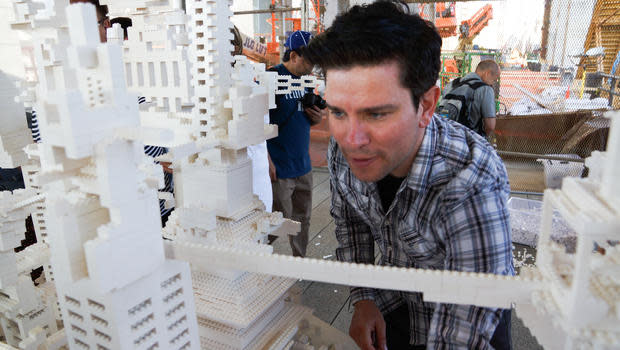
"The collectivity project" combines the visions of local architectural firms with input from the public to create a Lego cityscape. Visitors can create their own structures or rebuild existing ones. Paula Vasan/CNET
NEW YORK -- In a lower Manhattan park called the High Line -- a disused elevated railway turned plant filled promenade -- tiny worlds made from white Legos are constantly morphing.
That's because "The collectivity project," an installation here by internationally known artist Olafur Eliasson, encourages visitors to stop, play and relive their childhood memories.
"I forgot to eat lunch today, drinking a small amount of water," said 59-year-old New Yorker and professional sculptor Freddy Borges, who just couldn't walk away from the project. He spent eight hours working on a Lego building.
Legos, the iconic snap-together building blocks, have enjoyed a revival in recent years, as many other toys and games have moved into the digital realm. Eliasson's installation is an example of that, underscoring how people -- even in an increasingly digital culture -- want to physically interact.
"I was just thinking: 'I've got to make this as tall as possible,'" Borges said.
The installation is open daily from 10 a.m. to 7 p.m. local time, till September 30. And it's free. Eliasson -- whose work has appeared at New York's Museum of Modern Art, London's Tate Modern and other big-name temples of culture -- collaborated with a number of architectural firms in the area. Each firm built one structure out of Legos for the opening of the project. The only instruction Eliasson gave them was to create a vision of their "ideal city." Once the project opened to the public, on May 29, all the firms' Lego models were quickly built and rebuilt by visitors.
The project's goal? For people of all walks of life and all ages to create a collective cityscape. And what better way to do that than with Legos?
The High Line staff doesn't touch the structures (with the exception of adding more Legos to the tables when they're running low). The public is invited in each day, and what they decide to create is up to them.
This isn't the first time Eliasson has created collective art with Legos. Before he had the idea to showcase this project on the High Line, the artist presented it in public squares in Tirana, Albania (2005), Oslo (2006) and Copenhagen (2008).
Why did he choose Legos? And specifically white ones? For one thing, the plastic blocks originated in Denmark, where Eliasson was born. Beyond that, the word "lego" comes from the Danish phrase "leg godt," which means "play well." And the choice of white Legos had to do with creating a neutral, collective project. In other words, everyone can use the same tools -- white Legos -- and share a vision to create something together...or build something completely on their own from scratch.
CNET's Paula Vasan visited the installation to check out some of the Lego structures built so far. Take a look at her gallery:
The Lego installation where anyone can be an artist (pictures)
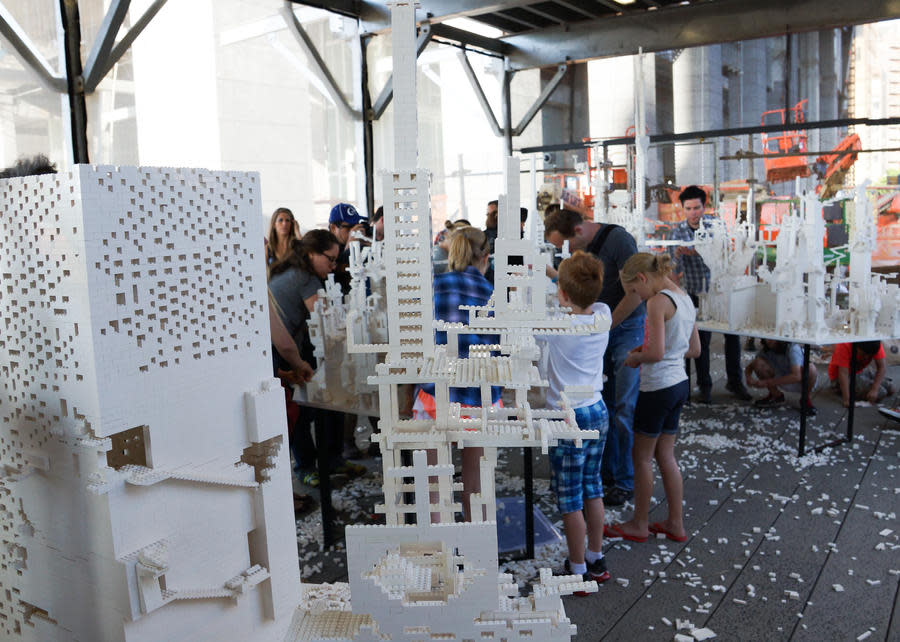
Lower Manhattan's High Line -- an old elevated railway that's been recycled as a park -- is currently playing host to an ever-evolving utopia made from all-white Legos. That's thanks to "The Collectivity Project," an installation by renowned artist Olafur Eliasson, which encourages visitors to get in touch with their inner child and modify Lego structures dreamed up by local architects.
I stopped by to see how things were shaping up and to photograph cooperative art in action. Click on for more photos, or here for a related story.
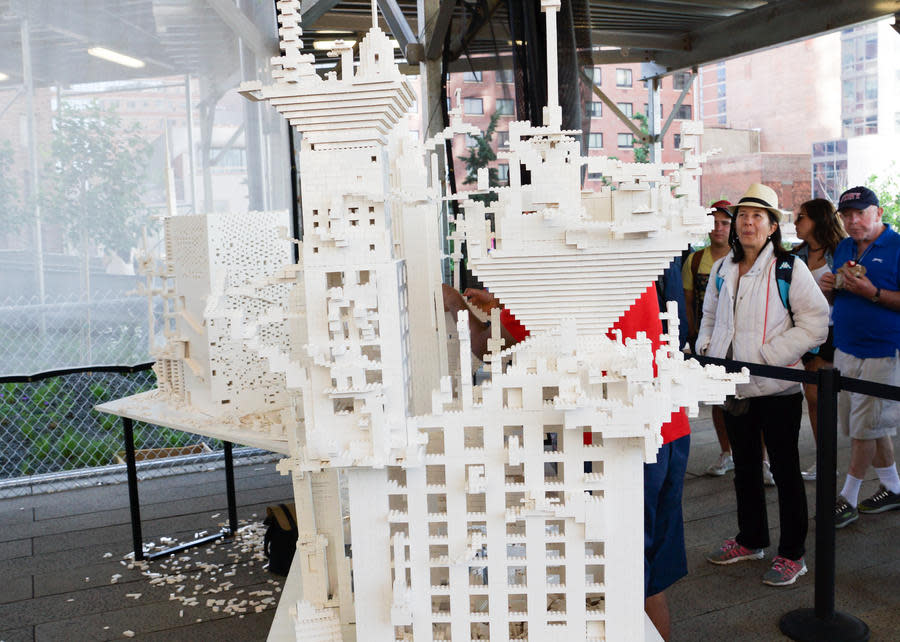
Open daily from 10 a.m. to 7 p.m. local time, the installation is up till September 30, and it's free. Spokespeople tell me the artist's goal is to make art relevant to society at large. And what better way to do that than by making Legos your medium?
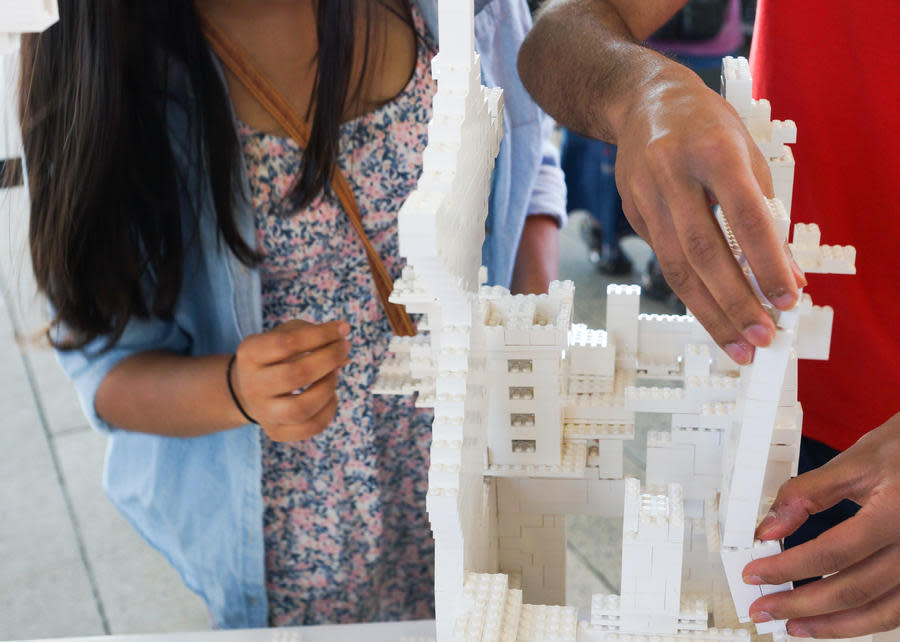
My contribution to this Lego building party was simply adding a handful of blocks to a bridge, because it really needed some reinforcement. Mostly, though, I stood back, observing a steady stream of people who worked together to create art and who helped the installation live up to its "Collectivity Project" name. I left thinking that Legos are clearly for everyone -- and that maybe I'd have to pick up my own set. The teenagers were having just as much fun playing with the Legos as people in their 60s and 70s were.
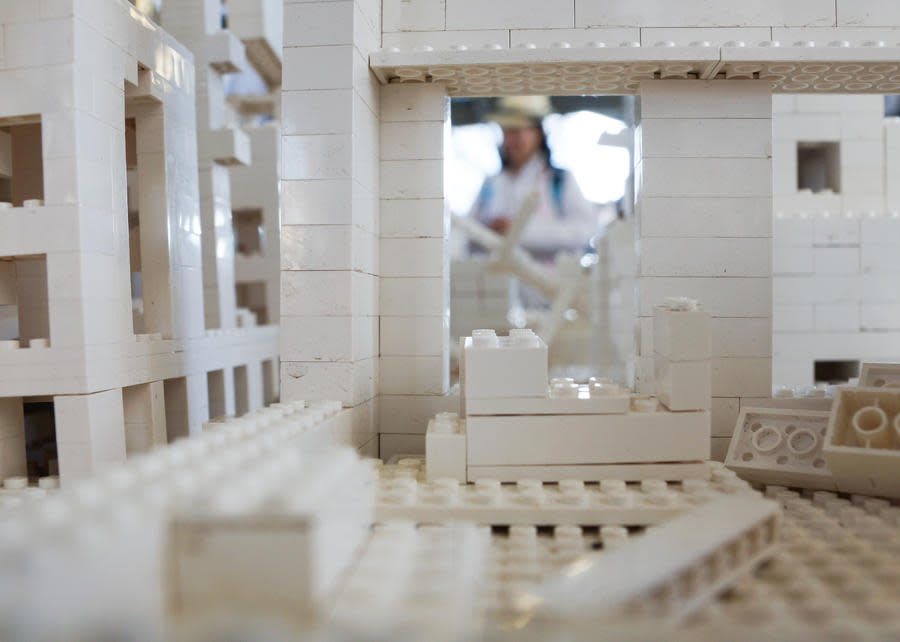
Eliasson collaborated with a number of architectural firms in the area. Each firm built one structure out of Legos for the opening of the project. The only instructions were to make a structure of their “ideal city." Once the project opened to the public on May 29, all the firms’ structures were quickly built and rebuilt by visitors.
The goal: For people of all walks of life and ages to create a collective cityscape.
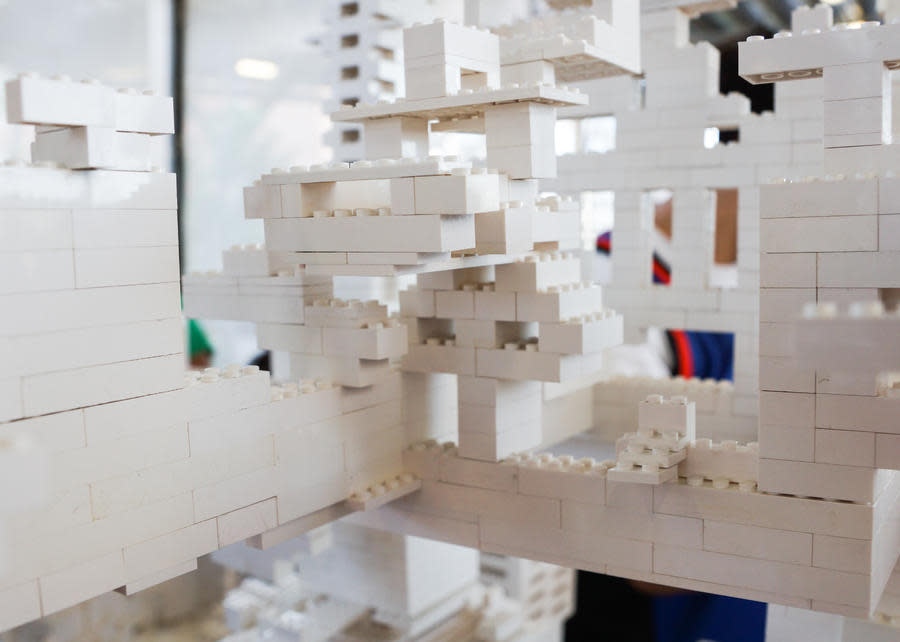
The High Line staff doesn't touch the structures -- with the exception of adding more Legos to the tables when they're running low. The public is invited in each day, and what they decide to create is up to them.
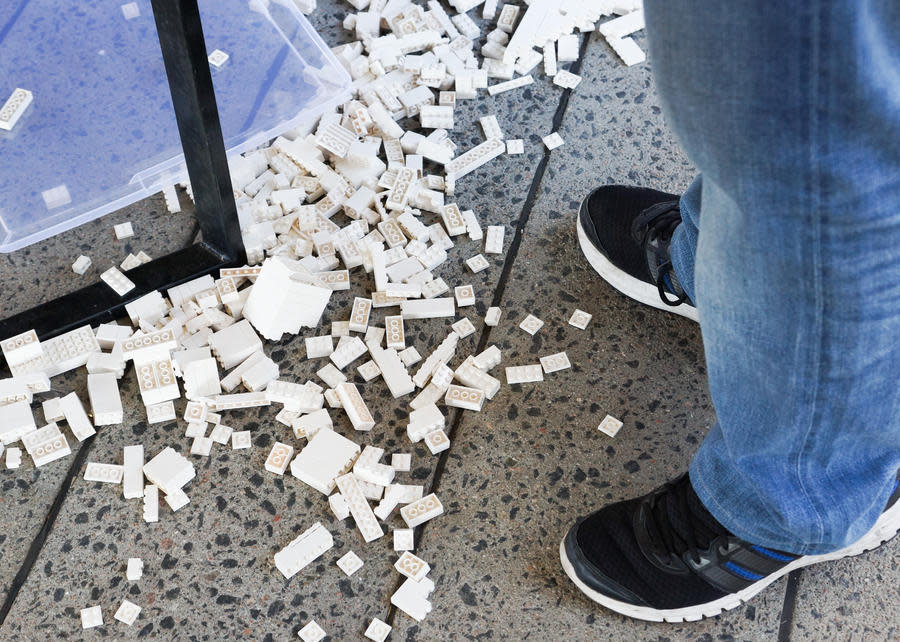
Why did the artist choose Legos? And specifically white Legos? The iconic snap-together blocks originated in Denmark, where the artist was born. The word "lego" comes from the Danish phrase "leg godt," which means "play well." The choice of white Legos had to do with creating a neutral, collective project. In other words, everyone can use the same tools -- white Legos -- and share a vision to create something together...or they can build something completely on their own from scratch.
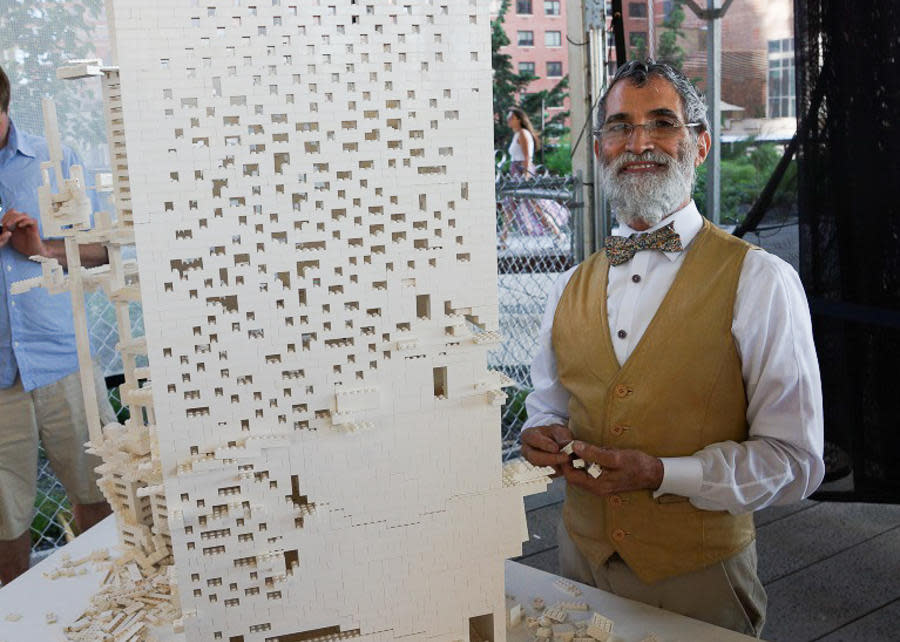
Here, 59-year-old New Yorker and professional sculptor Freddy Borges is shown working on his Lego creation. He spent a total of eight hours doing it.
"I forgot to eat lunch today, drinking a small amount of water," he says. "I was just thinking, 'I've got to make this as tall as possible.'"
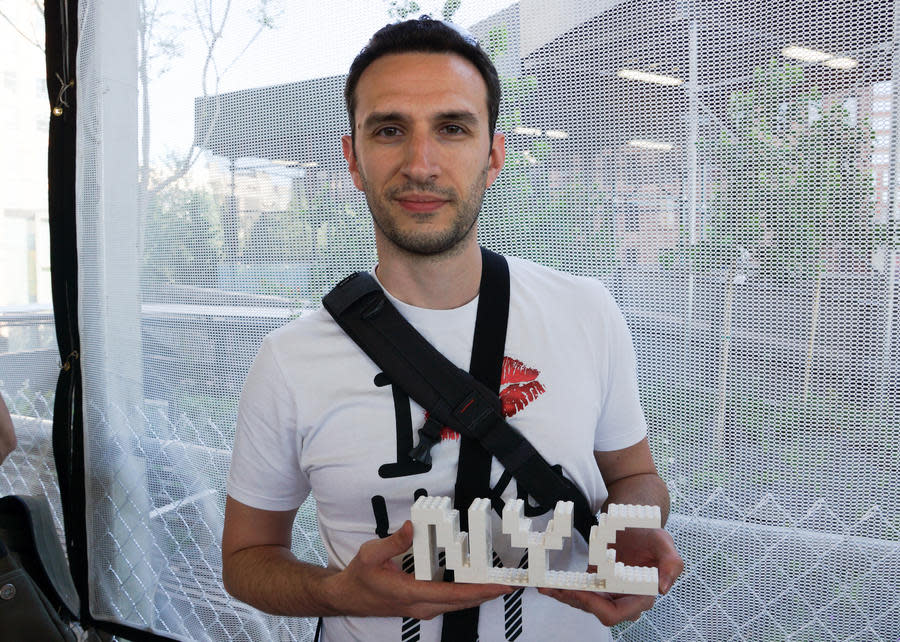
Thirty-four-year-old Massimo Moschiettini is visiting New York City from Belgium. "I love Legos because they're simple but you can create very complex objects," he told me. "You can create what you want! There are no limits."
His creation: A New York City logo.
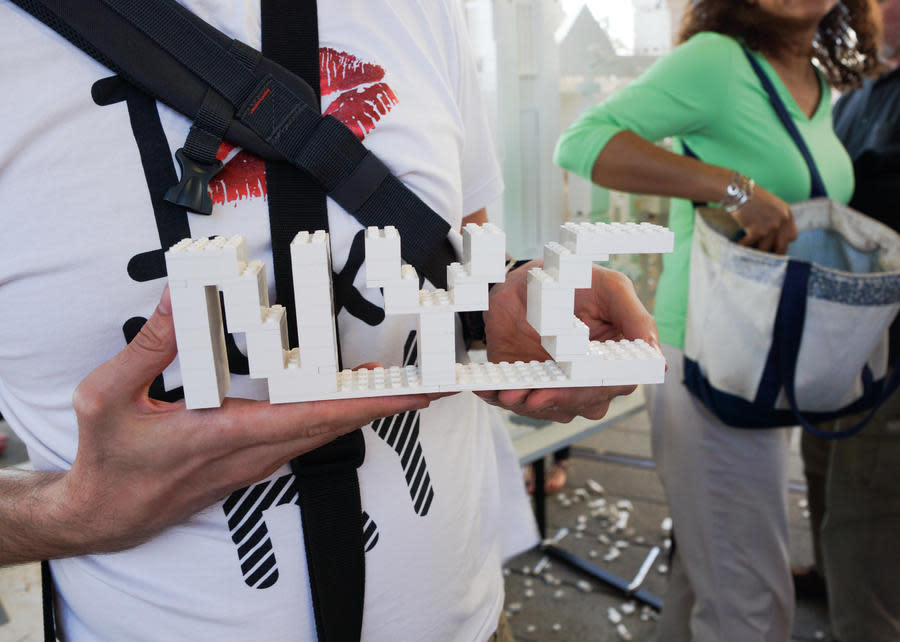
Moschiettini says playing with Legos brings back the days of his boyhood. "My children will also play with Legos," he said.
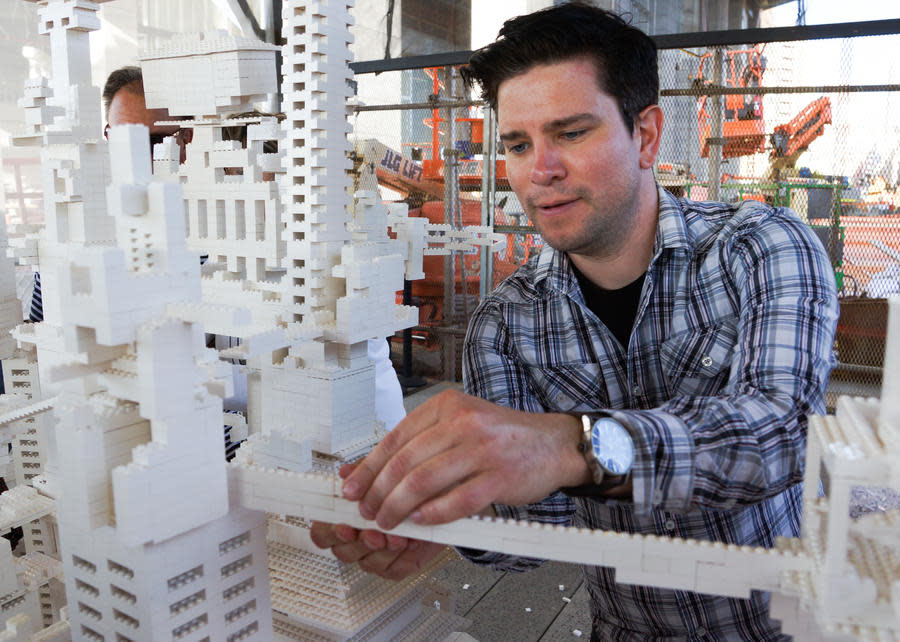
Brooklyn resident Mark Roden is shown here determinedly building a bridge. “I wanted to do something that I could easily point to as mine,” he said.
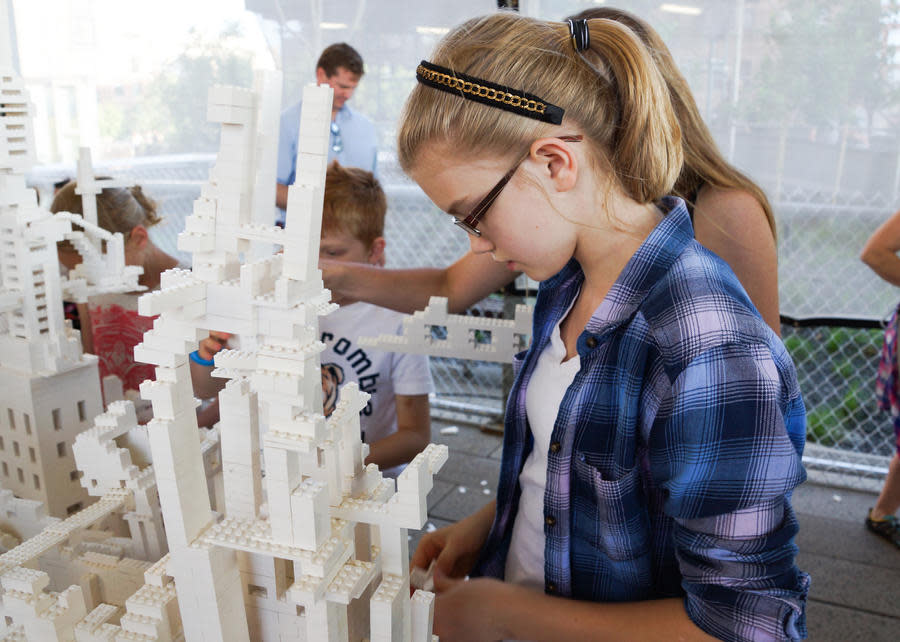
This isn’t the first time Eliasson has created collective art with Legos. Before he had the idea to showcase this project on the High Line, the artist presented it in public squares in Tirana, Albania (2005), Oslo (2006), and Copenhagen (2008).
Also from CNET:


